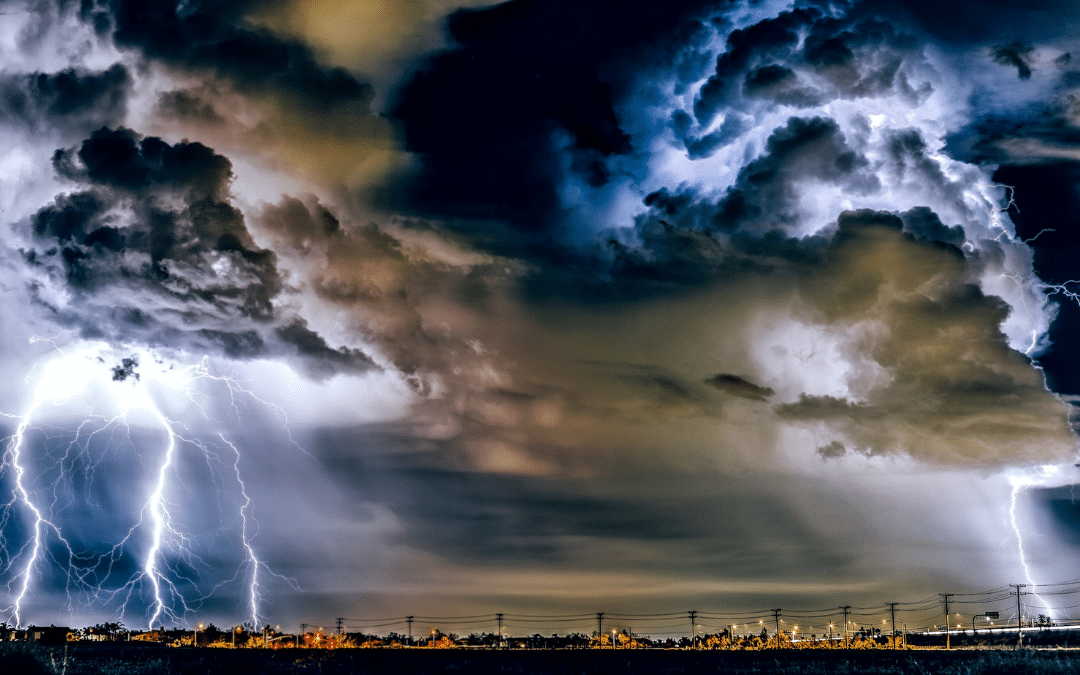Unpredictable weather is a trademark of spring: 73° and deliciously sunny one day, 41°, and sideways rain the next.
Fluctuating weather during this time of year also plays a major factor in the development of severe spring storms. However, with the right preparation, you can be sure that your home and family are ready to withstand the worst of it.
Follow these preparation tips to be sure you are spring storm-ready.
Be Weather Aware — You can sign up for a number of free weather alert services provided by national or local agencies, weather channels, and power companies. Usually, alerts come to your phone via text message or app, but many have multiple delivery methods. And remember, radio is the old standby, especially in a power outage (so set your emergency radio to the correct station ahead of time).
Trim the Trees — Trim low-hanging limbs, as well as any branches hanging near your home or power lines that could snap off in high winds and cause damage.
Free Your Gutters — Remove leaves and other debris from gutters, drains, and downspouts (best done each spring and fall). This ensures that any deluge of rainwater is quickly diverted away from your home and foundation rather than potentially flooding it. Take the opportunity to check gutters for leaks, damage, and sagging; also make sure they’re securely attached.
Check the Sump Pump — If you haven’t had to deal with a flooded basement, thanks are due to your hardworking sump pump. To keep it in good working order, test it a few times a year, including before spring storms. Clear any debris and make sure it’s working and draining properly. Consider adding a battery-powered back-up pump, or a standby generator, in case of power outages.
Get Ahead of Leaks — Leaks are sneaky … and can cause damage quickly. If you’ve had any leaks in the past, now’s the time to seal them up—before the big rains start. Also do a preventive check on your doors’ and windows’ sealing (inside and outside), as well as in the garage and basement, then fix any gaps or cracks.
Secure Items — By the time the wind is bending trees, it’s too late to worry about securing items in your yard. As soon as storms are forecast, bring items like patio furniture into the garage (or secure them in place outside). Anything that can become a projectile should be moved inside. Also close and secure shutters around your home. Drawing interior blinds and shades provide yet another layer of protection against flying debris and broken glass.
Get Your Plans in Place — When the storms roll in, you’ll be glad you made plans ahead of time.
-
- Storm Safety Plan — Create a safety plan with your family, and make sure everyone understands it and is on board. This would cover things like shelter-in-place locations in the home, evacuation routes, communication protocols if you’re separated, and a plan for your pets.
- Emergency Kit — Regularly check your kit and add, replace or discard items as needed. See our checklist here for a full emergency kit inventory. At the very least, prepare the following for storms: first aid supplies, flashlights with new batteries, two gallons of water per person, a hand-crank or battery-powered radio, a three-day supply of non-perishable food for your family and pets, and a two-month supply of any necessary medications.
- Be Ready for a Power Outage — Are you ready for a few days of no power? Charge all phones and electronic devices ahead of time. Make sure your generator is operational and ready to go. Fill your car’s gas tank (and some cans for your generator). For more tips, check out our power outage safety hacks. Finally, remember to use surge protectors when the power is being restored.
As the saying goes, “An ounce of prevention is worth a pound of cure.” When it comes to safeguarding your home, the steps above can go a long way toward preventing costly damage, headache, and hassle. And there’s no time like the present to start!
This article is furnished by California Casualty, providing auto and home insurance to educators, law enforcement officers, firefighters, and nurses. Get a quote at 1.866.704.8614 or www.calcas.com.
- Graduation – When to Remove Your Child from Your Auto Policy - May 18, 2023
- How to Prevent Catalytic Converter Theft - May 17, 2023
- How Much Does Home Insurance Cost? - May 17, 2023


Service is incredible. Employees are KIND, helpful, polite, through, and outstanding at explaining my future.
THANK YOU. KATHERINE MESSER